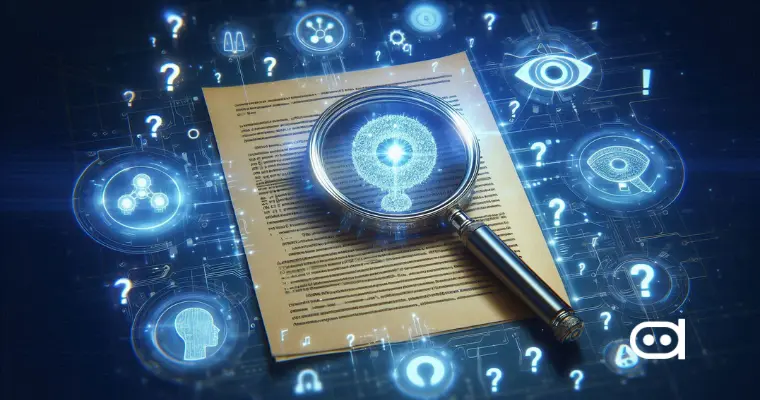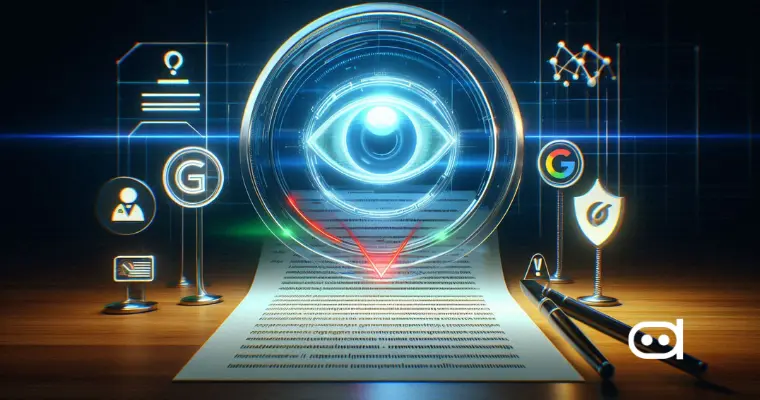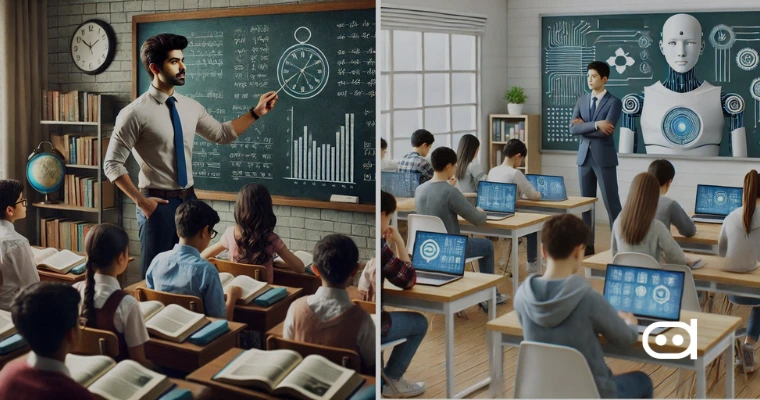
AI content detectors can identify human-created text and artificially generated text. Such detectors apply highly advanced algorithms to evaluate different aspects of language—sentence form, vocabulary, and writing. These detectors detect evidence of AI creation by comparing input text to huge databases of human and AI-authored content. In short, they are basically a kind of plagiarism checker that focuses on scenarios where AI has been used to generate content in order to validate originality and authenticity.
What Are AI Content Detectors?
AI content detectors help identify if something is human-authored or produced by artificial intelligence. They exist to check whether the content is original and legitimate and can weed out plagiarism from AI sources. Schools, marketing agencies, and brands are increasingly deploying such detectors to verify the accuracy and human authorship of received works. Several AI content detectors, such as Originality AI, Content at Scale, and Copyleaks, have gained popularity due to their ability to scan for text patterns that indicate the production of AI.
Claims Made by AI Content Detectors
High Accuracy Rates
AI content detectors often claim to have extremely high rates of accuracy in the recognition of AI- and human-authored content. Such claims are usually made based on their algorithms’ detection of subtle stylistic differences and idiosyncrasies unique to AI texts.
Multi-Language Support
Most AI content detectors have multilingual features, allowing you to read anything in multiple languages. This enhanced functionality is also what makes them so adaptable to a wide range of environments and user profiles.
User-Friendly Interfaces
They are typically designed with an intuitive user interface, with the aim of making them simple and easy to use. Easy-to-use interfaces and directions minimize the learning curve and make it accessible for everybody, regardless of technical ability.
Plagiarism Detection Features
The plagiarism detection functions of these tools are a boon, and they help teachers in education to detect AI content. To build a more ethical and transparent content ecosystem, content owners may verify attribution, businesses can authenticate marketing collateral, professors can graduate students based on academic integrity, and so on.
Reality: How Reliable Are These Claims?
AI content detectors such as Originality AI (99% accuracy and less than 2% false positives) and Copyleaks (0.2% false positive rate) are quite open about their accuracy, but we can only presume it’s accurate. Detectors must be updated on a continuous basis to ensure that they remain current, as the AI writing models are subject to constant change.
Real-World Use Cases of AI Content Detectors
Business Compliance
Business owners can use AI content detectors to make sure they are in line with the law for original content and prevent legal issues for plagiarism or AI-generated content in marketing communications and other publications.
Education Sector
In higher education, such tools help ensure academic honesty by spotting artificially created student work. Teachers deploy them to spot plagiarism and make sure students are tackling assignments according to their own skill levels to foster fair examinations.
Journalism and Media Integrity
AI detectors help journalists and media organizations validate the source of articles and material, fight AI-based misinformation, and preserve journalistic norms.
Healthcare Content Validation
In medical contexts, AI detectors can be used to confirm the correctness and novelty of medical data, ensuring that patients receive trustworthy and reliable content free of AI-created mistakes or plagiarism.
Social Media Moderation
Social media websites use AI content detectors to block and de-list AI spam, propaganda, and disinformation campaigns—making the web safer and more credible.
Government Documentation Compliance
Governments can leverage AI content detectors to verify the originality and legitimacy of government documents, contracts, and policy briefs and deter AI content that could threaten national security or public confidence.
Why Reliability Matters
Impact on Business Decisions
The validity of AI content detectors has a significant effect on business decisions. Improper findings could cause unsubstantiated plagiarism or AI usage, thus ruining reputations, breaching agreements, or resulting in unnecessary litigation.
Ethical Concerns and Overreliance
Over-reliance on potentially untrustworthy AI content detectors has ethical implications. False positives might punish people or entities in a detrimental way, and false negatives might facilitate the spread of AI-produced misinformation or plagiarism.
Navigating the Challenges of AI Content Detection
Advancements in Generative AI
AI content detectors are incredibly confused by the rapid development of generative AI models like ChatGPT or others. These models continue to get better and better at capturing human-level writing, making it even harder for detectors to pick up on the nuanced distinctions between AI- and human-written text.
Lack of Standardization
A fundamental problem with AI content detection is that there is no single standard or criteria. Each detector implements a different algorithm and dataset, which can lead to differences in precision and performance. This fragmentation makes it impossible to create robust detection techniques.
Ethical and Practical Concerns
AI content detectors do present some ethical and practical challenges. Privacy concerns occur when user information is gathered and processed. False positives lead to false charges of plagiarism or AI, while false negatives make it easier to circulate fake news or malicious materials. Algorithm bias and opaque algorithms raise problems about justice and responsibility.
Conclusion
AI content detectors can be a useful means of checking whether the content is original and real, but reliability is still a concern. New arithmetical advancements in AI text generation continuously undermine these detectors and make them more impermeable and uniform. Moral considerations like privacy and bias must also be addressed. Despite their potential benefits, we must use them responsibly and critically, acknowledge their limitations, and maintain a balance in content auditing.








